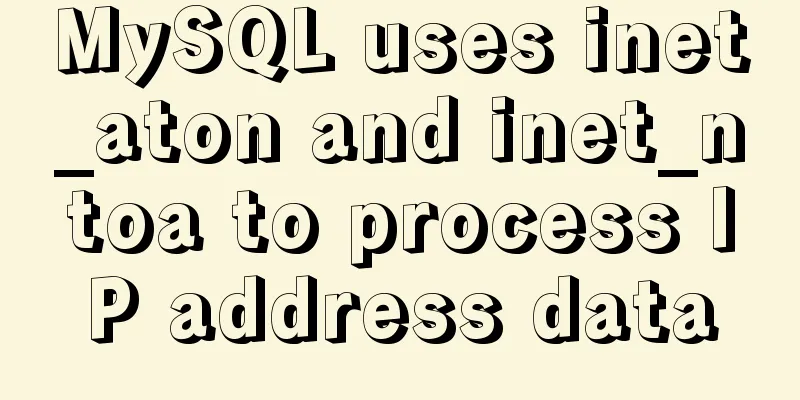How to solve the problem of -bash: /usr/bin/yum: No such file or directory after typing yum in linux

|
After entering yum in linux, the prompt: -bash: /usr/bin/yum: No such file or directory solution When I was installing the program today, I found that a plug-in was not installed, so I typed a command without even looking at it. yum remove yum Then the cup... [root@localhost ~]# yum -bash: /usr/bin/yum: No such file or directory This careless mistake did not bring down the entire system, but it did make yum unusable. So, I tried tossing it rpm -ivh --nodeps http://mirrors.163.com/centos/5/os/x86_64/CentOS/yum-fastestmirror-1.1.16-14.el5.centos.1.noarch.rpm rpm -ivh --nodeps http://mirrors.163.com/centos/5/os/x86_64/CentOS/yum-metadata-parser-1.1.2-3.el5.centos.x86_64.rpm rpm -ivh --nodeps http://mirrors.163.com/centos/5/os/x86_64/CentOS/yum-3.2.22-26.el5.centos.noarch.rpm Explanation of rpm --nodeps --nodeps don't verify package dependencies Next, try to enter yum again, and an inexplicable error occurs again [root@localhost ~]# yum There was a problem importing one of the Python modules required to run yum. The error leading to this problem was: libxml2.so.2: cannot open shared object file: No such file or directory Please install a package which provides this module, or verify that the module is installed correctly. It's possible that the above module doesn't match the The current version of Python is: 2.4.3 (#1, Nov 11 2010, 13:30:19) [GCC 4.1.2 20080704 (Red Hat 4.1.2-48)] If you cannot solve this problem yourself, please go to the yum faq at: http://wiki.linux.duke.edu/YumFaq Because yum calls python, run Python and try to see if it works. [root@localhost~]# python Python 2.4.3 (#1, Nov 11 2010, 13:30:19) [GCC 4.1.2 20080704 (Red Hat 4.1.2-48)] on linux2 Type "help", "copyright", "credits" or "license" for more information. >>> import yum Traceback (most recent call last): File "<stdin>", line 1, in ? File "/usr/lib/python2.4/site-packages/yum/__init__.py", line 54, in ? import transactioninfo File "/usr/lib/python2.4/site-packages/yum/transactioninfo.py", line 31, in ? from sqlitesack import YumAvailablePackageSqlite File "/usr/lib/python2.4/site-packages/yum/sqlitesack.py", line 26, in ? import yumRepo File "/usr/lib/python2.4/site-packages/yum/yumRepo.py", line 32, in ? import sqlitecachec File "/usr/lib64/python2.4/site-packages/sqlitecachec.py", line 19, in ? import _sqlitecache ImportError: libxml2.so.2: cannot open shared object file: No such file or directory >>> It says libxml2.so.2 is missing. Try installing it. rpm -ivh http://mirrors.163.com/centos/5/os/x86_64/CentOS/libxml2-2.6.26-2.1.2.8.x86_64.rpm Test and run the yum command again, the result is normal, I am very happy
[root@localhost ~]# yum
Loaded plugins: fastestmirror
You need to give some command
usage: yum [options] COMMAND
List of Commands:
check-update Check for available package updates
clean Remove cached data
deplist List a package's dependencies
downgrade downgrade a package
erase Remove a package or packages from your system
groupinfo Display details about a package group
groupinstall Install the packages in a group on your system
grouplist List available package groups
groupremove Remove the packages in a group from your system
help Display a helpful usage message
info Display details about a package or group of packages
install Install a package or packages on your system
list List a package or groups of packages
localinstall Install a local RPM
makecache Generate the metadata cache
provides Find what package provides the given value
reinstall reinstall a package
repolist Display the configured software repositories
resolvedep Determine which package provides the given dependency
search Search package details for the given string
shell Run an interactive yum shell
update Update a package or packages on your system
upgrade Update packages taking obsoletes into account
options:
-h, --help show this help message and exit
-t, --tolerant be tolerant of errors
-C run entirely from cache, don't update cache
-c [config file] config file location
-R [minutes] maximum command wait time
-d [debug level] debugging output level
--showduplicates show duplicates, in repos, in list/search commands
-e [error level] error output level
-q, --quiet quiet operation
-v, --verbose verbose operation
-y answer yes for all questions
--version show Yum version and exit
--installroot=[path] set install root
--enablerepo=[repo] enable one or more repositories (wildcards allowed)
--disablerepo=[repo] disable one or more repositories (wildcards allowed)
-x [package], --exclude=[package]
exclude package(s) by name or glob
--disableexcludes=[repo]
disable exclude from main, for a repo or for
everything
--obsoletes enable obsoletes processing during updates
--noplugins disable Yum plugins
--nogpgcheck disable gpg signature checking
--disableplugin=[plugin]
disable plugins by name
--enableplugin=[plugin]
enable plugins by name
--skip-broken skip packages with depsolving problems
--color=COLOR control whether color is used
Plugin Options:Finally, update the system quickly. yum update Well, the yum problem is completely solved! You can try it. Thank you for your support of 123WORDPRESS.COM. You may also be interested in:
|
<<: Simple encapsulation of axios and example code for use
>>: mysql show simple operation example
Recommend
Detailed explanation of psql database backup and recovery in docker
1. Postgres database backup in Docker Order: dock...
HTML sample code for implementing tab switching
Tab switching is also a common technology in proj...
How to insert video into HTML and make it compatible with all browsers
There are two most commonly used methods to insert...
Alibaba Cloud Centos7 installation and configuration of SVN
1. Install SVN server yum install subversion 2. C...
Detailed explanation of basic data types in mysql8.0.19
mysql basic data types Overview of common MySQL d...
The easiest way to make a program run automatically at startup in Linux
I collected a lot of them, but all ended in failu...
How to import SQL files in Navicat Premium
I started working on my final project today, but ...
How to configure two-way certificate verification on nginx proxy server
Generate a certificate chain Use the script to ge...
Workerman writes the example code of mysql connection pool
First of all, you need to understand why you use ...
MySQL implements a solution similar to Oracle sequence
MySQL implements Oracle-like sequences Oracle gen...
Tutorial on using the hyperlink tag in HTML
The various HTML documents of the website are con...
CSS achieves footer "bottom absorption" effect
We often encounter this problem: how to use CSS t...
Detailed explanation of JavaScript primitive data type Symbol
Table of contents Introduction Description Naming...
A brief discussion on the differences between FTP, FTPS and SFTP
Table of contents Introduction to FTP, FTPS and S...
Detailed explanation of MySQL DEFINER usage
Table of contents Preface: 1.Brief introduction t...









